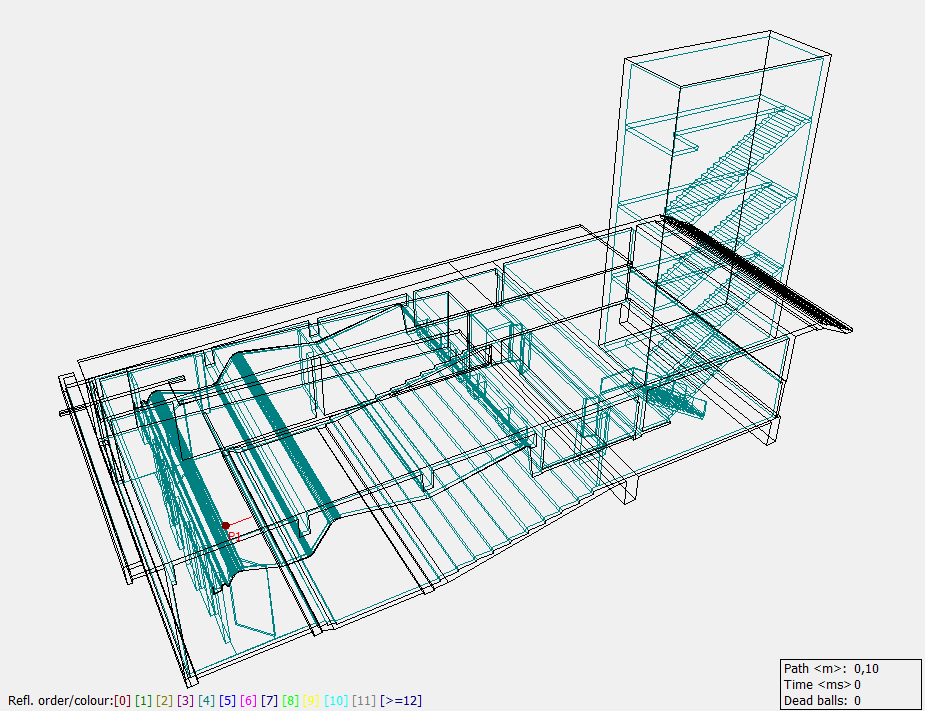When a stem breaks the water perpendicularly, its angle is measured to be 0 degree, and the degree gets closer to 90 as it is slanted more, and thelevel surface is 90 degrees [from the Sogetsu Ikebana Handbook]
drawing
curator: Magdalena Moskalewicz
Post MoMA, New York, September 2013
in the collection of Post MoMA in New York
The work was produced in response to an invitation issued by the editors of Post and was concerned with the Sogetsu Art Centre – the building for which John Cage composed his legendary silence – 4’33” (Cage himself is reported to say: “Composing flowers takes place in silence.”) The piece is a 4.5 x 6 m drawing, made up of 450 A4 pages, its entirety reminiscent of technical drawings. It represents a stairwell, or an empty, central space produced by flights of stairs in an architectural object.
The non-surviving building of the reportedly most experimental school of flower composition in Japan, Sogetsu Ikebana, was a jewel of modernist architecture (designed by Kezno Tange). It was composed of three over-ground floors with classrooms and school offices, and an enormous underground, housing au auditorium and a concert call, where young Japanese musician broke the received rules of composition.
The piece originated in an exploration of tension between the two spaces. The artist was concerned with the way in which the mum, over-ground zone – where upper-class women (as they were, traditionally, supposed to be occupied with ikebana) spent their time contemplating biological forms – was contaminated with an echo of sounds produced by musicians experimenting below.
The artist worked with the contrast of the element of sound and an aura of reticence and silence. On the basis of archive photographs of the building, she designed two visual models. The first assumed a form of a multi-coloured sphere – a representation of echoes – a side effect of musicians. Shapes are dispersed from the stage, where music was produced, and travel to the back of the auditorium, reflecting from walls to, ultimately, suffuse the staircase. The other, colourless, contour model is a soundless journey through empty spaces, following the path of the echoes. Performing a radical gesture of cutting through every level of her superimposed visualisation, the artist facilitated a direct interaction of the two spaces, thereby transforming rooms on all levels of the building into resonating chambers through a visual simulation of heterogeneity of the two acoustic environments. The mute visualisation of sound dispersion was prompted by ikebana: its scrupulous choreography of hand movement, where silence is a method, rather than a lack of sound.
The Museum of Modern Art in New York [MoMA]-run Post (post: notes on modern and contemporary art around the globe) operates online and is a global platform engaged in studies on experimental art of the 20th and 21st centuries. It is a combination of a journal, an archive, an exhibition space and a forum, making use of advantages of the hierarchy-free internet environment. Post is a space open to experts and artist world-wide, who share their research, knowledge, ideas and criticisms on its pages. Katarzyna Krakowiak was invited to deliver her response to research on the Sogetsu Ikebana, its history and structure, and decided to work with the Sogetsu Art Centre due to its Cagean context.
